Contents
Introduction
1 Introduction
1.1 Structure of the TOGAF Document
1.2 Executive Overview
2 Core Concepts
2.1 What is TOGAF?
2.2 What is Architecture in the Context of TOGAF?
2.3 What Kind of Architecture Does TOGAF Deal With?
2.4 Architecture Development Method
2.5 Deliverables, Artifacts, and Building Blocks
2.6 Enterprise Continuum
2.7 Architecture Repository
2.8 Establishing and Maintaining an Enterprise Architecture Capability
2.9 Establishing the Architecture Capability as an Operational Entity
2.10 Using TOGAF with Other Frameworks
2.11 TOGAF Document Categorization Model
3 Definitions
3.1 Abstraction
3.2 Activity
3.3 Actor
3.4 Application
3.5 Application Architecture
3.6 Application Platform
3.7 Application Platform Interface (API)
3.8 Architectural Style
3.9 Architecture
3.10 Architecture Building Block (ABB)
3.11 Architecture Continuum
3.12 Architecture Development Method (ADM)
3.13 Architecture Domain
3.14 Architecture Framework
3.15 Architecture Governance
3.16 Architecture Landscape
3.17 Architecture Principles
3.18 Architecture View
3.19 Architecture Vision
3.20 Artifact
3.21 Baseline
3.22 Baseline Architecture
3.23 Boundaryless Information Flow
3.24 Building Block
3.25 Business Architecture
3.26 Business Domain
3.27 Business Function
3.28 Business Governance
3.29 Business Service
3.30 Capability
3.31 Capability Architecture
3.32 Capability Increment
3.33 Communications and Stakeholder Management
3.34 Concerns
3.35 Constraint
3.36 Data Architecture
3.37 Deliverable
3.38 Enterprise
3.39 Enterprise Continuum
3.40 Environment Management
3.41 Financial Management
3.42 Foundation Architecture
3.43 Framework
3.44 Gap
3.45 Governance
3.46 Information
3.47 Information Technology (IT)
3.48 Interoperability
3.49 Knowledge
3.50 Logical
3.51 Metadata
3.52 Metamodel
3.53 Method
3.54 Methodology
3.55 Model
3.56 Modeling
3.57 Objective
3.58 Organization
3.59 Patterns
3.60 Performance Management
3.61 Physical
3.62 Platform
3.63 Platform Services
3.64 Principle
3.65 Quality Management
3.66 Reference Model (RM)
3.67 Repository
3.68 Requirement
3.69 Resource Management
3.70 Roadmap
3.71 Role
3.72 Segment Architecture
3.73 Service Management
3.74 Service Orientation
3.75 Service Oriented Architecture (SOA)
3.76 Skill
3.77 Solution Architecture
3.78 Solution Building Block (SBB)
3.79 Solutions Continuum
3.80 Stakeholder
3.81 Standards Information Base (SIB)
3.82 Strategic Architecture
3.83 Target Architecture
3.84 Taxonomy of Architecture Views
3.85 Technical Reference Model (TRM)
3.86 Technology Architecture
3.87 Transition Architecture
3.88 View
3.89 Viewpoint
3.90 Work Package
4 Release Notes
4.1 What's New in TOGAF 9?
4.2 The Benefits of TOGAF 9
4.3 Mapping of the TOGAF 8.1.1 Structure to TOGAF 9
4.4 Mapping of TOGAF 9 Structure to TOGAF 8.1.1
4.5 Using TOGAF
4.5.1 Conditions of Use
4.5.2 How Much Does TOGAF Cost?
4.5.3 Downloads
4.6 Why Join The Open Group?
ADM
5 Introduction
5.1 ADM Overview
5.1.1 The ADM, Enterprise Continuum, and Architecture Repository
5.1.2 The ADM and the Foundation Architecture
5.1.3 ADM and Supporting Guidelines and Techniques
5.2 Architecture Development Cycle
5.2.1 Key Points
5.2.2 Basic Structure
5.3 Adapting the ADM
5.4 Architecture Governance
5.5 Scoping the Architecture
5.5.1 Enterprise Scope/Focus
5.5.2 Architecture Domains
5.5.3 Vertical Scope/Level of Detail
5.5.4 Time Period
5.6 Architecture Integration
5.7 Summary
6 Preliminary Phase
6.1 Objectives
6.2 Approach
6.2.1 Enterprise
6.2.2 Organizational Context
6.2.3 Requirements for Architecture Work
6.2.4 Principles
6.2.5 Management Frameworks
6.2.6 Relating the Management Frameworks
6.2.7 Planning for Enterprise Architecture/Business Change Maturity Evaluation
6.3 Inputs
6.3.1 Reference Materials External to the Enterprise
6.3.2 Non-Architectural Inputs
6.3.3 Architectural Inputs
6.4 Steps
6.4.1 Scope the Enterprise Organizations Impacted
6.4.2 Confirm Governance and Support Frameworks
6.4.3 Define and Establish Enterprise Architecture Team and Organization
6.4.4 Identify and Establish Architecture Principles
6.4.5 Select and Tailor Architecture Framework(s)
6.4.6 Implement Architecture Tools
6.5 Outputs
7 Phase A: Architecture Vision
7.1 Objectives
7.2 Approach
7.2.1 General
7.2.2 Creating the Architecture Vision
7.2.3 Business Scenarios
7.3 Inputs
7.3.1 Reference Materials External to the Enterprise
7.3.2 Non-Architectural Inputs
7.3.3 Architectural Inputs
7.4 Steps
7.4.1 Establish the Architecture Project
7.4.2 Identify Stakeholders, Concerns, and Business Requirements
7.4.3 Confirm and Elaborate Business Goals, Business Drivers, and Constraints
7.4.4 Evaluate Business Capabilities
7.4.5 Assess Readiness for Business Transformation
7.4.6 Define Scope
7.4.7 Confirm and Elaborate Architecture Principles, including Business Principles
7.4.8 Develop Architecture Vision
7.4.9 Define the Target Architecture Value Propositions and KPIs
7.4.10 Identify the Business Transformation Risks and Mitigation Activities
7.4.11 Develop Enterprise Architecture Plans and Statement of Architecture Work; Secure Approval
7.5 Outputs
8 Phase B: Business Architecture
8.1 Objectives
8.2 Approach
8.2.1 General
8.2.2 Developing the Baseline Description
8.2.3 Business Modeling
8.2.4 Architecture Repository
8.3 Inputs
8.3.1 Reference Materials External to the Enterprise
8.3.2 Non-Architectural Inputs
8.3.3 Architectural Inputs
8.4 Steps
8.4.1 Select Reference Models, Viewpoints, and Tools
8.4.2 Develop Baseline Business Architecture Description
8.4.3 Develop Target Business Architecture Description
8.4.4 Perform Gap Analysis
8.4.5 Define Roadmap Components
8.4.6 Resolve Impacts Across the Architecture Landscape
8.4.7 Conduct Formal Stakeholder Review
8.4.8 Finalize the Business Architecture
8.4.9 Create Architecture Definition Document
8.5 Outputs
9 Phase C: Information Systems Architectures
9.1 Objectives
9.2 Approach
9.2.1 Development
9.2.2 Implementation
9.3 Inputs
9.3.1 Reference Materials External to the Enterprise
9.3.2 Non-Architectural Inputs
9.3.3 Architectural Inputs
9.4 Steps
9.5 Outputs
10 Phase C: Information Systems Architectures Data Architecture
10.1 Objectives
10.2 Approach
10.2.1 Key Considerations for Data Architecture
10.2.2 Architecture Repository
10.3 Inputs
10.3.1 Reference Materials External to the Enterprise
10.3.2 Non-Architectural Inputs
10.3.3 Architectural Inputs
10.4 Steps
10.4.1 Select Reference Models, Viewpoints, and Tools
10.4.2 Develop Baseline Data Architecture Description
10.4.3 Develop Target Data Architecture Description
10.4.4 Perform Gap Analysis
10.4.5 Define Roadmap Components
10.4.6 Resolve Impacts Across the Architecture Landscape
10.4.7 Conduct Formal Stakeholder Review
10.4.8 Finalize the Data Architecture
10.4.9 Create Architecture Definition Document
10.5 Outputs
11 Phase C: Information Systems Architectures Application Architecture
11.1 Objectives
11.2 Approach
11.2.1 Architecture Repository
11.3 Inputs
11.3.1 Reference Materials External to the Enterprise
11.3.2 Non-Architectural Inputs
11.3.3 Architectural Inputs
11.4 Steps
11.4.1 Select Reference Models, Viewpoints, and Tools
11.4.2 Develop Baseline Application Architecture Description
11.4.3 Develop Target Application Architecture Description
11.4.4 Perform Gap Analysis
11.4.5 Define Roadmap Components
11.4.6 Resolve Impacts Across the Architecture Landscape
11.4.7 Conduct Formal Stakeholder Review
11.4.8 Finalize the Application Architecture
11.4.9 Create Architecture Definition Document
11.5 Outputs
12 Phase D: Technology Architecture
12.1 Objectives
12.2 Approach
12.2.1 Architecture Repository
12.3 Inputs
12.3.1 Reference Materials External to the Enterprise
12.3.2 Non-Architectural Inputs
12.3.3 Architectural Inputs
12.4 Steps
12.4.1 Select Reference Models, Viewpoints, and Tools
12.4.2 Develop Baseline Technology Architecture Description
12.4.3 Develop Target Technology Architecture Description
12.4.4 Perform Gap Analysis
12.4.5 Define Roadmap Components
12.4.6 Resolve Impacts Across the Architecture Landscape
12.4.7 Conduct Formal Stakeholder Review
12.4.8 Finalize the Technology Architecture
12.4.9 Create Architecture Definition Document
12.5 Outputs
12.6 Postscript
13 Phase E: Opportunities & Solutions
13.1 Objectives
13.2 Approach
13.3 Inputs
13.3.1 Reference Materials External to the Enterprise
13.3.2 Non-Architectural Inputs
13.3.3 Architectural Inputs
13.4 Steps
13.4.1 Determine/Confirm Key Corporate Change Attributes
13.4.2 Determine Business Constraints for Implementation
13.4.3 Review and Consolidate Gap Analysis Results from Phases B to D
13.4.4 Review IT Requirements from a Functional Perspective
13.4.5 Consolidate and Reconcile Interoperability Requirements
13.4.6 Refine and Validate Dependencies
13.4.7 Confirm Readiness and Risk for Business Transformation
13.4.8 Formulate High-Level Implementation and Migration Strategy
13.4.9 Identify and Group Major Work Packages
13.4.10 Identify Transition Architectures
13.4.11 Create Portfolio and Project Charters and Update the Architectures
13.5 Outputs
14 Phase F: Migration Planning
14.1 Objectives
14.2 Approach
14.3 Inputs
14.3.1 Reference Materials External to the Enterprise
14.3.2 Non-Architectural Inputs
14.3.3 Architectural Inputs
14.4 Steps
14.4.1 Confirm Management Framework Interactions for Implementation and Migration Plan
14.4.2 Assign a Business Value to Each Project
14.4.3 Estimate Resource Requirements, Project Timings, and Availability/Delivery Vehicles
14.4.4 Prioritize the Migration Projects through the Conduct of a Cost/Benefit Assessment and Risk Validation
14.4.5 Confirm Transition Architecture Increments/Phases and Update Architecture Definition Document
14.4.6 Generate the Architecture Implementation Roadmap (Time-Lined) and Migration Plan
14.4.7 Establish the Architecture Evolution Cycle and Document Lessons Learned
14.5 Outputs
15 Phase G: Implementation Governance
15.1 Objectives
15.2 Approach
15.3 Inputs
15.3.1 Reference Materials External to the Enterprise
15.3.2 Non-Architectural Inputs
15.3.3 Architectural Inputs
15.4 Steps
15.4.1 Confirm Scope and Priorities for Deployment with Development Management
15.4.2 Identify Deployment Resources and Skills
15.4.3 Guide Development of Solutions Deployment
15.4.4 Perform Enterprise Architecture Compliance Reviews
15.4.5 Implement Business and IT Operations
15.4.6 Perform Post-Implementation Review and Close the Implementation
15.5 Outputs
16 Phase H: Architecture Change Management
16.1 Objectives
16.2 Approach
16.2.1 Drivers for Change
16.2.2 Enterprise Architecture Change Management Process
16.2.3 Guidelines for Maintenance versus Architecture Redesign
16.3 Inputs
16.3.1 Reference Materials External to the Enterprise
16.3.2 Non-Architectural Inputs
16.3.3 Architectural Inputs
16.4 Steps
16.4.1 Establish Value Realization Process
16.4.2 Deploy Monitoring Tools
16.4.3 Manage Risks
16.4.4 Provide Analysis for Architecture Change Management
16.4.5 Develop Change Requirements to Meet Performance Targets
16.4.6 Manage Governance Process
16.4.7 Activate the Process to Implement Change
16.5 Outputs
17 ADM Architecture Requirements Management
17.1 Objectives
17.2 Approach
17.2.1 General
17.2.2 Resources
17.3 Inputs
17.4 Steps
17.5 Outputs
ADM_Guidelines_&_Techniques
18 Introduction
18.1 Guidelines for Adapting the ADM Process
18.2 Techniques for Architecture Development
19 Applying Iteration to the ADM
19.1 Overview
19.2 Iteration Cycles
19.3 Two Styles of Architecture Definition
19.4 Mapping TOGAF Phases to Iteration Cycles
20 Applying the ADM at Different Enterprise Levels
20.1 Overview
20.2 Classes of Architecture Engagement
20.3 Developing Architectures at Different Levels
20.4 ADM Cycle Approaches
20.4.1 Using Iterations within a Single ADM Cycle
20.4.2 Using a Hierarchy of ADM Processes
21 Security Architecture and the ADM
21.1 Overview
21.2 Introduction
21.3 Guidance on Security for the Architecture Domains
21.4 ADM Architecture Requirements Management
21.5 Preliminary Phase
21.5.1 Security Inputs
21.5.2 Security Outputs
21.6 Phase A: Architecture Vision
21.6.1 Security Inputs
21.6.2 Security Outputs
21.7 Phase B: Business Architecture
21.7.1 Security Inputs
21.7.2 Security Outputs
21.8 Phase C: Information Systems Architectures
21.8.1 Security Inputs
21.8.2 Security Outputs
21.9 Phase D: Technology Architecture
21.9.1 Security Inputs
21.9.2 Security Outputs
21.10 Phase E: Opportunities & Solutions
21.11 Phase F: Migration Planning
21.12 Phase G: Implementation Governance
21.13 Phase H: Architecture Change Management
21.14 References
22 Using TOGAF to Define & Govern SOAs
22.1 Overview
22.2 Introduction
22.3 Business-Led SOA Community
22.4 Business- & Developer-Led SOA Communities
22.5 Complexities Arising from SOA
22.6 How Enterprise Architecture Supports SOA
22.7 SOA and TOGAF
22.8 Guidelines for Service Contract Definition
22.8.1 Service Qualities and TOGAF
22.8.2 Purpose of a Service Contract
22.8.3 Service Governance Considerations
22.9 Content and Structure of a Service Contract
22.10 Service Contract Template
23 Architecture Principles
23.1 Introduction
23.2 Characteristics of Architecture Principles
23.3 Components of Architecture Principles
23.4 Developing Architecture Principles
23.4.1 Qualities of Principles
23.5 Applying Architecture Principles
23.6 Example Set of Architecture Principles
23.6.1 Business Principles
23.6.2 Data Principles
23.6.3 Application Principles
23.6.4 Technology Principles
24 Stakeholder Management
24.1 Introduction
24.2 Approach to Stakeholder Management
24.3 Steps in the Stakeholder Management Process
24.3.1 Identify Stakeholders
24.3.2 Classify Stakeholder Positions
24.3.3 Determine Stakeholder Management Approach
24.3.4 Tailor Engagement Deliverables
24.4 Template Stakeholder Map
25 Architecture Patterns
25.1 Introduction
25.1.1 Background
25.1.2 Content of a Pattern
25.1.3 Terminology
25.1.4 Architecture Patterns in Use
25.2 US Treasury Architecture Development Guidance (TADG)
25.2.1 TADG Pattern Content
25.2.2 TADG Architecture Patterns
25.3 IBM Patterns for e-Business
25.4 Some Pattern Resources
26 Business Scenarios
26.1 Introduction
26.2 Benefits of Business Scenarios
26.3 Creating the Business Scenario
26.3.1 Overall Process
26.3.2 Gathering
26.3.3 Analyzing
26.3.4 Reviewing
26.4 Contents of a Business Scenario
26.5 Contributions to the Business Scenario
26.6 Business Scenarios and the TOGAF ADM
26.7 Guidelines on Developing Business Scenarios
26.7.1 General Guidelines
26.7.2 Questions to Ask for Each Area
26.8 Guidelines on Business Scenario Documentation
26.8.1 Textual Documentation
26.8.2 Business Scenario Models
26.9 Guidelines on Goals and Objectives
26.9.1 Importance of Goals
26.9.2 Importance of SMART Objectives
26.9.3 Categories of Goals and Objectives
26.10 Summary
27 Gap Analysis
27.1 Introduction
27.2 Suggested Steps
27.3 Example
28 Migration Planning Techniques
28.1 Implementation Factor Assessment and Deduction Matrix
28.2 Consolidated Gaps, Solutions, and Dependencies Matrix
28.3 Architecture Definition Increments Table
28.4 Enterprise Architecture State Evolution Table
28.5 Business Value Assessment Technique
29 Interoperability Requirements
29.1 Overview
29.2 Defining Interoperability
29.3 Enterprise Operating Model
29.4 Refining Interoperability
29.5 Determining Interoperability Requirements
29.6 Reconciling Interoperability Requirements with Potential Solutions
29.7 Summary
30 Business Transformation Readiness Assessment
30.1 Introduction
30.1.1 Business Transformation Enablement Program (BTEP)
30.2 Determine Readiness Factors
30.3 Present Readiness Factors
30.4 Assess Readiness Factors
30.4.1 Readiness Factor Vision
30.4.2 Readiness Factor Rating
30.4.3 Readiness Factor Risks & Actions
30.5 Readiness and Migration Planning
30.6 Marketing the Implementation Plan
30.7 Conclusion
31 Risk Management
31.1 Introduction
31.2 Risk Classification
31.3 Risk Identification
31.4 Initial Risk Assessment
31.5 Risk Mitigation and Residual Risk Assessment
31.6 Conduct Residual Risk Assessment
31.7 Risk Monitoring and Governance (Phase G)
31.8 Summary
32 Capability-Based Planning
32.1 Overview
32.2 Capability-Based Planning Paradigm
32.3 Concept of Capability-Based Planning
32.3.1 Capability Dimensions
32.3.2 Capability Increments
32.4 Capabilities in an Enterprise Architecture Context
32.5 Summary
Architecture_Content_Framework
33 Introduction
33.1 Overview
33.2 Content Metamodel
33.3 Content Framework and the TOGAF ADM
33.4 Structure of Part IV
34 Content Metamodel
34.1 Overview
34.2 Content Metamodel Vision and Concepts
34.2.1 Core Content Metamodel Concepts
34.2.2 Overview of the Content Metamodel
34.3 Content Metamodel in Detail
34.3.1 Core Content Metamodel
34.3.2 Core Architecture Artifacts
34.3.3 Full Content Metamodel
34.4 Content Metamodel Extensions
34.4.1 Governance Extensions
34.4.2 Services Extensions
34.4.3 Process Modeling Extensions
34.4.4 Data Extensions
34.4.5 Infrastructure Consolidation Extensions
34.4.6 Motivation Extensions
34.5 Content Metamodel Objects
34.6 Content Metamodel Attributes
34.7 Metamodel Relationships
35 Architectural Artifacts
35.1 Basic Concepts
35.1.1 Simple Example of a Viewpoint and View
35.2 Developing Views in the ADM
35.2.1 General Guidelines
35.2.2 View Creation Process
35.3 Views, Tools, and Languages
35.3.1 Overview
35.4 Views and Viewpoints
35.4.1 Example of Views and Viewpoints
35.4.2 Views and Viewpoints in Enterprise Architecture
35.4.3 Need for a Common Language and Interoperable Tools for Architecture Description
35.5 Conclusions
35.6 Taxonomy of Architecture Viewpoints
35.7 Viewpoints in the Preliminary Phase
35.8 Viewpoints in Phase A
35.9 Viewpoints in Phase B
35.10 Viewpoints in the Phase C Data Architecture
35.11 Viewpoints in the Phase C Application Architecture
35.12 Viewpoints in Phase D
35.13 Viewpoints in Phase E
35.14 Viewpoints for Requirements Management
35.15 Developing a Business Architecture View
35.15.1 Stakeholders and Concerns
35.15.2 Developing the View
35.15.3 Key Issues
35.16 Developing an Enterprise Security View
35.16.1 Stakeholders and Concerns
35.16.2 Developing the View
35.16.3 Basic Concepts
35.16.4 Security Generic Architecture View
35.16.5 Security Services Allocation
35.17 Developing a Software Engineering View
35.17.1 Stakeholders and Concerns
35.17.2 Key Issues
35.17.3 Conclusion
35.18 Developing a System Engineering View
35.18.1 Stakeholders and Concerns
35.18.2 Key Issues
35.19 Developing a Communications Engineering View
35.19.1 Stakeholders and Concerns
35.19.2 Key Issues
35.20 Developing a Data Flow View
35.20.1 Stakeholders and Concerns
35.20.2 Developing the View
35.20.3 Key Issues
35.21 Developing an Enterprise Manageability View
35.21.1 Stakeholders and Concerns
35.21.2 Developing the View
35.21.3 Key Issues
35.22 Developing an Acquirer View
35.22.1 Stakeholders and Concerns
35.22.2 Developing the View
35.22.3 Key Issues
36 Architecture Deliverables
36.1 Introduction
36.2 Deliverable Descriptions
36.2.1 Architecture Building Blocks
36.2.2 Architecture Contract
36.2.3 Architecture Definition Document
36.2.4 Architecture Principles
36.2.5 Architecture Repository
36.2.6 Architecture Requirements Specification
36.2.7 Architecture Roadmap
36.2.8 Architecture Vision
36.2.9 Business Principles, Business Goals, and Business Drivers
36.2.10 Capability Assessment
36.2.11 Change Request
36.2.12 Communications Plan
36.2.13 Compliance Assessment
36.2.14 Implementation and Migration Plan
36.2.15 Implementation Governance Model
36.2.16 Organizational Model for Enterprise Architecture
36.2.17 Request for Architecture Work
36.2.18 Requirements Impact Assessment
36.2.19 Solution Building Blocks
36.2.20 Statement of Architecture Work
36.2.21 Tailored Architecture Framework
36.2.22 Transition Architecture
37 Building Blocks
37.1 Overview
37.2 Introduction to Building Blocks
37.2.1 Overview
37.2.2 Generic Characteristics
37.2.3 Architecture Building Blocks
37.2.4 Solution Building Blocks
37.3 Building Blocks and the ADM
37.3.1 Basic Principles
37.3.2 Building Block Specification Process in the ADM
37.4 Building Blocks Example
37.4.1 Introduction
37.4.2 Structure
37.4.3 Background to the Example
37.4.4 Identifying Building Block Scope
37.4.5 Identifying Building Block Requirements and Constraints
37.4.6 Architecture Modeling
37.4.7 Opportunity Identification
37.4.8 Building Block Re-Use Level
Enterprise_Continuum_&_Tools
38 Introduction
38.1 Introduction
38.2 Structure of Part V
39 Enterprise Continuum
39.1 Overview
39.2 Enterprise Continuum and Architecture Re-Use
39.3 Constituents of the Enterprise Continuum
39.4 Enterprise Continuum in Detail
39.4.1 Architecture Continuum
39.4.2 Solutions Continuum
39.5 Relationship between the Enterprise Continuum and TOGAF ADM
39.6 Enterprise Continuum and Your Organization
39.6.1 Relationships
39.6.2 Your Enterprise
40 Architecture Partitioning
40.1 Overview
40.2 Characteristics of Solutions
40.3 Characteristics of Architectures
40.4 Applying Classification to Create Partitioned Architectures
40.4.1 Partitioning the Architecture Landscape to Understand the State of the Enterprise
40.4.2 Partitioning Reference Models to Encourage Good Practice and Re-Use
40.4.3 Enforce Corporate Policy though Compliance with Standards
40.4.4 Activities within the Preliminary Phase
40.4.5 Activities within Phases A to F
40.4.6 Activities within Phases G and H
40.4.7 Content Aggregation and Integration
41 Architecture Repository
41.1 Overview
41.2 Architecture Landscape
41.3 Reference Library
41.3.1 Overview
41.4 Standards Information Base
41.4.1 Overview
41.4.2 Types of Standard
41.4.3 Standards Lifecycle
41.4.4 Standards Classification within the Standards Information Base
41.5 Governance Log
41.5.1 Overview
41.5.2 Contents of the Governance Log
42 Tools for Architecture Development
42.1 Overview
42.2 Issues in Tool Standardization
42.3 Evaluation Criteria and Guidelines
42.3.1 Tool Criteria
42.3.2 General Pointers
TOGAF_Reference_Models
43 Foundation Architecture: Technical Reference Model
43.1 Concepts
43.1.1 Role of the TRM in the Foundation Architecture
43.1.2 TRM Components
43.1.3 Other TRMs
43.2 High-Level Breakdown
43.2.1 Overview
43.2.2 Portability and Interoperability
43.3 TRM in Detail
43.3.1 Introduction
43.3.2 TRM Entities and Interfaces
43.3.3 Application Software
43.3.4 Application Platform
43.3.5 Communications Infrastructure
43.3.6 Application Platform Interface
43.3.7 Communications Infrastructure Interface
43.3.8 Qualities
43.4 Application Platform Taxonomy
43.4.1 Basic Principles
43.4.2 Application Platform Service Categories
43.4.3 Application Platform Service Qualities
43.5 Detailed Platform Taxonomy
43.5.1 Data Interchange Services
43.5.2 Data Management Services
43.5.3 Graphics and Imaging Services
43.5.4 International Operation Services
43.5.5 Location and Directory Services
43.5.6 Network Services
43.5.7 Operating System Services
43.5.8 Software Engineering Services
43.5.9 Transaction Processing Services
43.5.10 User Interface Services
43.5.11 Security Services
43.5.12 System and Network Management Services
43.5.13 Object-Oriented Provision of Services
44 Integrated Information Infrastructure Reference Model
44.1 Basic Concepts
44.1.1 Background
44.1.2 Components of the Model
44.1.3 Relationship to Other parts of TOGAF
44.1.4 Key Business and Technical Drivers
44.1.5 Status of the III-RM
44.2 High-Level View
44.2.1 Derivation of the III-RM from the TRM
44.2.2 High-Level III-RM Graphic
44.2.3 Components of the High-Level III-RM
44.3 Detailed Taxonomy
44.3.1 Detailed III-RM Graphic
44.3.2 Business Applications
44.3.3 Infrastructure Applications
44.3.4 Application Platform
44.3.5 Qualities
Architecture_Capability_Framework
45 Introduction
45.1 Overview
45.2 Structure of Part VII
46 Establishing an Architecture Capability
46.1 Overview
46.2 Phase A: Architecture Vision
46.3 Phase B: Business Architecture
46.4 Phase C: Information Systems Architecture Data
46.5 Phase C: Information Systems Architecture Application
46.6 Phase D: Technology Architecture
46.7 Phase E: Opportunities & Solutions
46.8 Phase F: Migration Planning
46.9 Phase G: Implementation Governance
46.10 Phase H: Architecture Change Management
46.11 Requirements Management
47 Architecture Board
47.1 Role
47.2 Responsibilities
47.3 Setting Up the Architecture Board
47.3.1 Triggers
47.3.2 Size of the Board
47.3.3 Board Structure
47.4 Operation of the Architecture Board
47.4.1 General
47.4.2 Preparation
47.4.3 Agenda
48 Architecture Compliance
48.1 Introduction
48.2 Terminology: The Meaning of Architecture Compliance
48.3 Architecture Compliance Reviews
48.3.1 Purpose
48.3.2 Timing
48.3.3 Governance and Personnel Scenarios
48.4 Architecture Compliance Review Process
48.4.1 Overview
48.4.2 Roles
48.4.3 Steps
48.5 Architecture Compliance Review Checklists
48.5.1 Hardware and Operating System Checklist
48.5.2 Software Services and Middleware Checklist
48.5.3 Applications Checklists
48.5.4 Information Management Checklists
48.5.5 Security Checklist
48.5.6 System Management Checklist
48.5.7 System Engineering/Overall Architecture Checklists
48.5.8 System Engineering/Methods & Tools Checklist
48.6 Architecture Compliance Review Guidelines
48.6.1 Tailoring the Checklists
48.6.2 Conducting Architecture Compliance Reviews
49 Architecture Contracts
49.1 Role
49.2 Contents
49.2.1 Statement of Architecture Work
49.2.2 Contract between Architecture Design and Development Partners
49.2.3 Contract between Architecting Function and Business Users
49.3 Relationship to Architecture Governance
50 Architecture Governance
50.1 Introduction
50.1.1 Levels of Governance within the Enterprise
50.1.2 Nature of Governance
50.1.3 Technology Governance
50.1.4 IT Governance
50.1.5 Architecture Governance: Overview
50.2 Architecture Governance Framework
50.2.1 Architecture Governance Framework Conceptual Structure
50.2.2 Architecture Governance Framework Organizational Structure
50.3 Architecture Governance in Practice
50.3.1 Architecture Governance Key Success Factors
50.3.2 Elements of an Effective Architecture Governance Strategy
51 Architecture Maturity Models
51.1 Overview
51.2 Background
51.3 US DoC ACMM Framework
51.3.1 Overview
51.3.2 Elements of the ACMM
51.3.3 Example: Enterprise Architecture Process Maturity Levels
51.4 Capability Maturity Models Integration (CMMI)
51.4.1 Introduction
51.4.2 SCAMPI Method
51.5 Conclusions
52 Architecture Skills Framework
52.1 Introduction
52.2 Need for an Enterprise Architecture Skills Framework
52.2.1 Definitional Rigor
52.2.2 Basis of an Internal Architecture Practice
52.3 Goals/Rationale
52.3.1 Certification of Enterprise Architects
52.3.2 Specific Benefits
52.4 Enterprise Architecture Role and Skill Categories
52.4.1 Overview
52.4.2 TOGAF Roles
52.4.3 Categories of Skills
52.4.4 Proficiency Levels
52.5 Enterprise Architecture Role and Skill Definitions
52.5.1 Generic Skills
52.5.2 Business Skills & Methods
52.5.3 Enterprise Architecture Skills
52.5.4 Program or Project Management Skills
52.5.5 IT General Knowledge Skills
52.5.6 Technical IT Skills
52.5.7 Legal Environment
52.6 Generic Role and Skills of the Enterprise Architect
52.6.1 Generic Role
52.6.2 Characterization in Terms of the Enterprise Continuum
52.6.3 Key Characteristics of an Enterprise Architect
52.7 Conclusions
Appendices
A Glossary of Supplementary Definitions
A.1 Access Control (AC)
A.2 Ada
A.3 Application Component
A.4 Application Software
A.5 Availability
A.6 Batch Processing
A.7 Business System
A.8 Catalog
A.9 Client
A.10 COBIT
A.11 Communications Network
A.12 Communications Node
A.13 Communications System
A.14 Composite Application
A.15 Configuration Management
A.16 Connectivity Service
A.17 Contract
A.18 Control
A.19 CxO
A.20 Data Dictionary
A.21 Data Element
A.22 Data Entity
A.23 Data Interchange Service
A.24 Data Management Service
A.25 Database
A.26 Database Management System
A.27 Directory Service
A.28 Distributed Database
A.29 Driver
A.30 End User
A.31 Enterprise Resource Planning (ERP) System
A.32 Event
A.33 External Environment Interface (EEI)
A.34 FORTRAN
A.35 Functional Decomposition
A.36 Goal
A.37 Guideline
A.38 Hardware
A.39 Human Computer Interface (HCI)
A.40 Information Domain
A.41 Information System (IS)
A.42 Information System Service
A.43 Interaction
A.44 Interaction Model
A.45 Interface
A.46 ITIL
A.47 Key Performance Indicator (KPI)
A.48 Lifecycle
A.49 Location
A.50 Logical Application Component
A.51 Logical Data Component
A.52 Logical Technology Component
A.53 Managing Successful Programs (MSP)
A.54 Matrix
A.55 Measure
A.56 Metaview
A.57 Multimedia Service
A.58 Open Specifications
A.59 Open System
A.60 Operational Governance
A.61 Operating System Service
A.62 Organization Unit
A.63 Packaged Services
A.64 Physical Application Component
A.65 Physical Data Component
A.66 Physical Technology Component
A.67 Portability
A.68 Portfolio
A.69 PRINCE2
A.70 Process
A.71 Product
A.72 Profile
A.73 Profiling
A.74 Program
A.75 Project
A.76 Risk Management
A.77 Scalability
A.78 Security
A.79 Server
A.80 Service
A.81 Service Quality
A.82 SMART
A.83 Supplier Management
A.84 System
A.85 System and Network Management Service
A.86 System Stakeholder
A.87 Technology Component
A.88 Time Period
A.89 Transaction
A.90 Transaction Sequence
A.91 Use-Case
A.92 User
A.93 User Interface Service
B Abbreviations

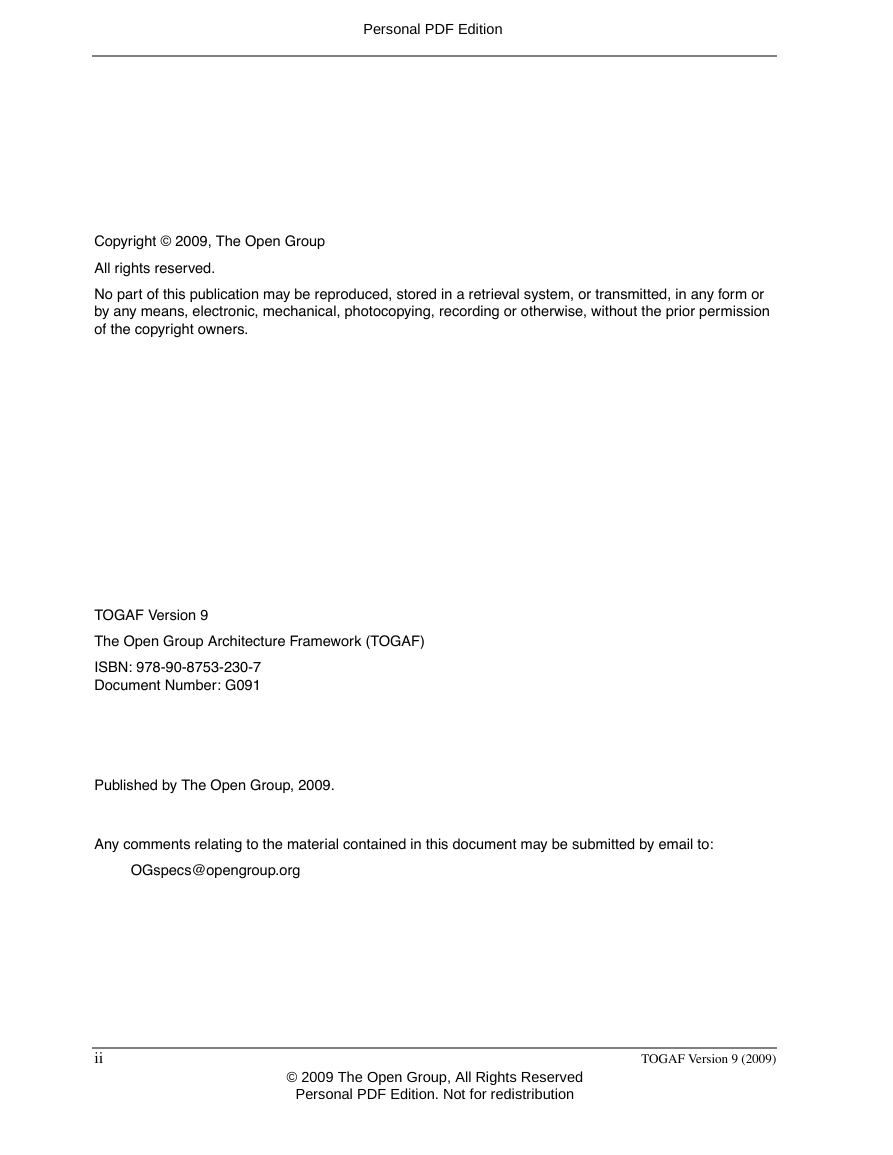
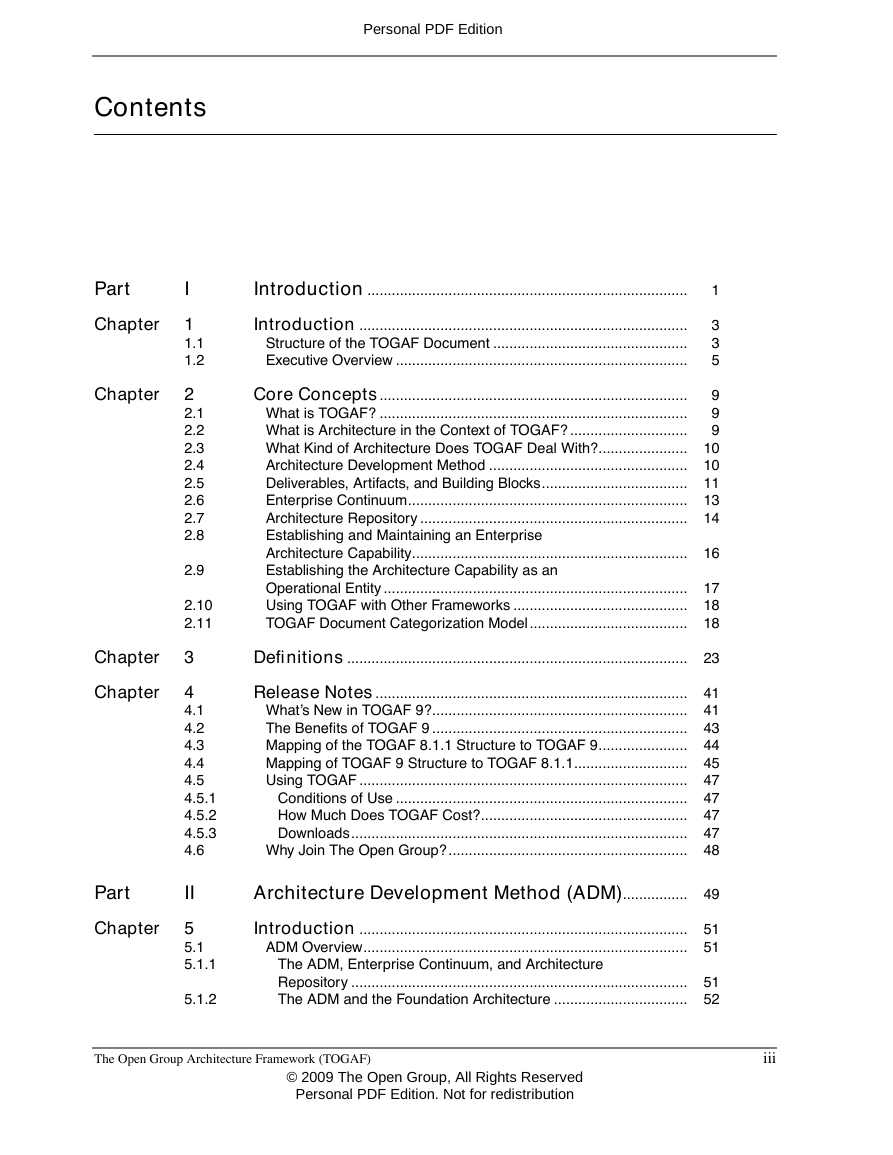
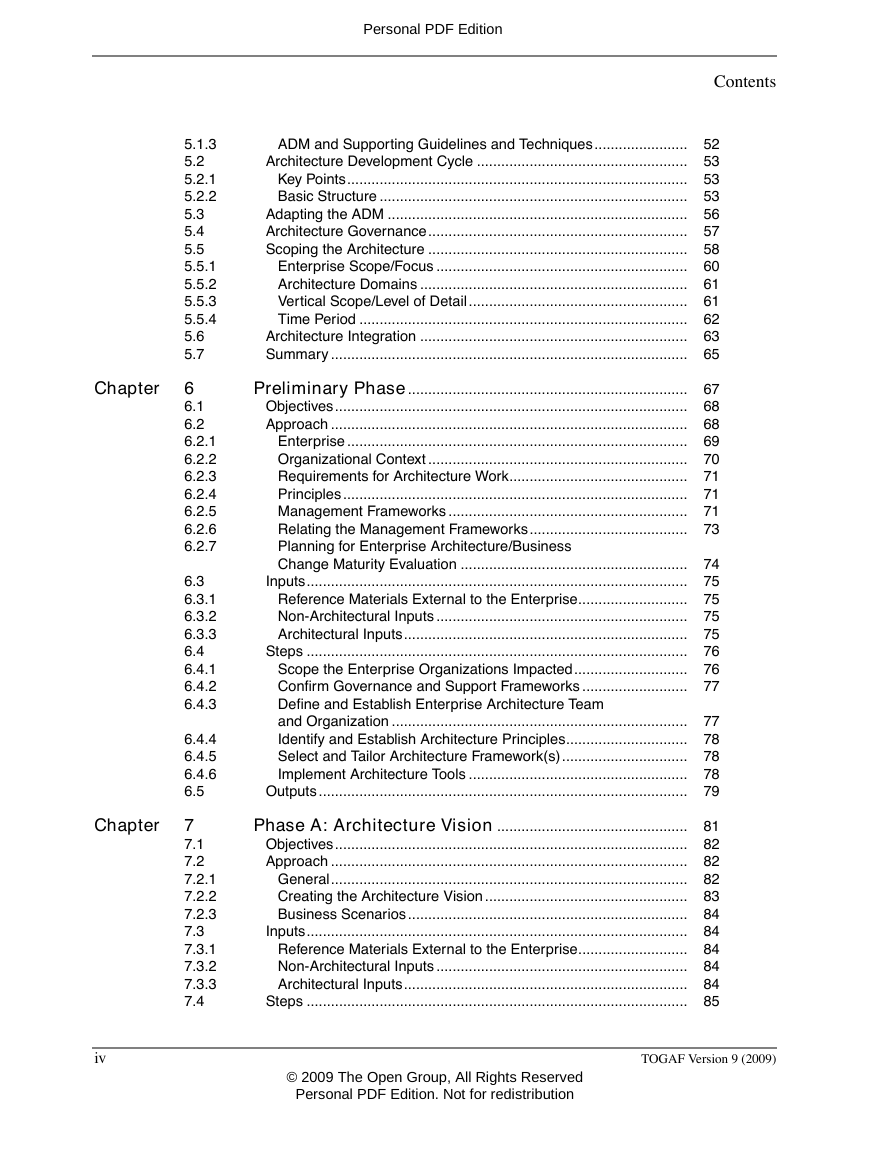
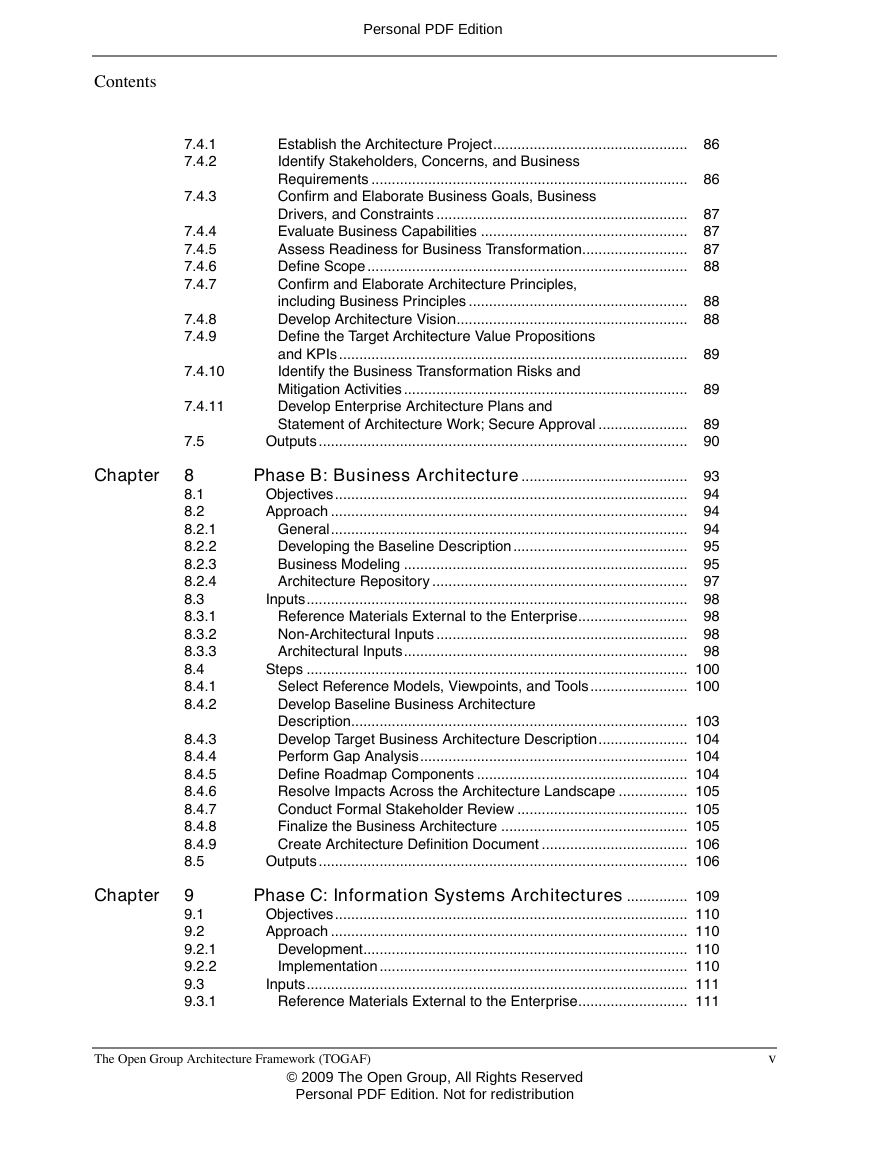
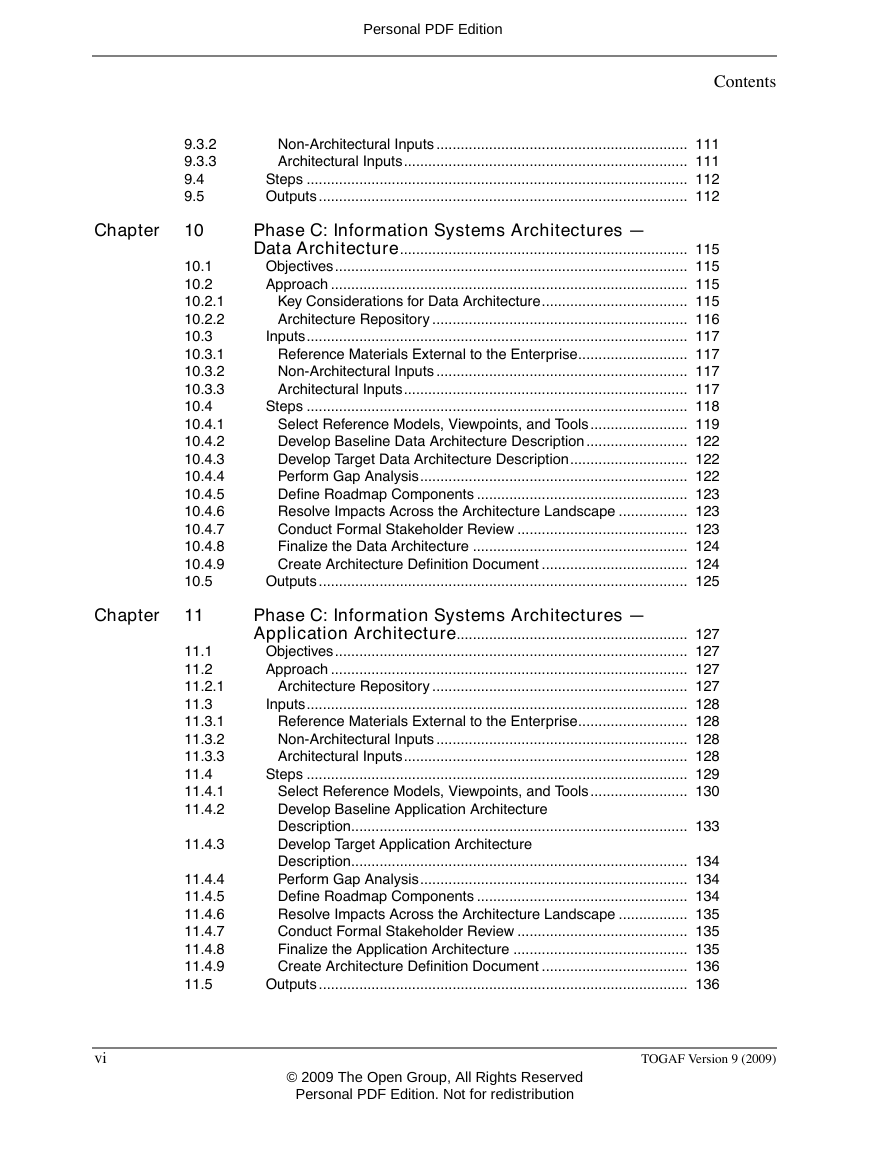
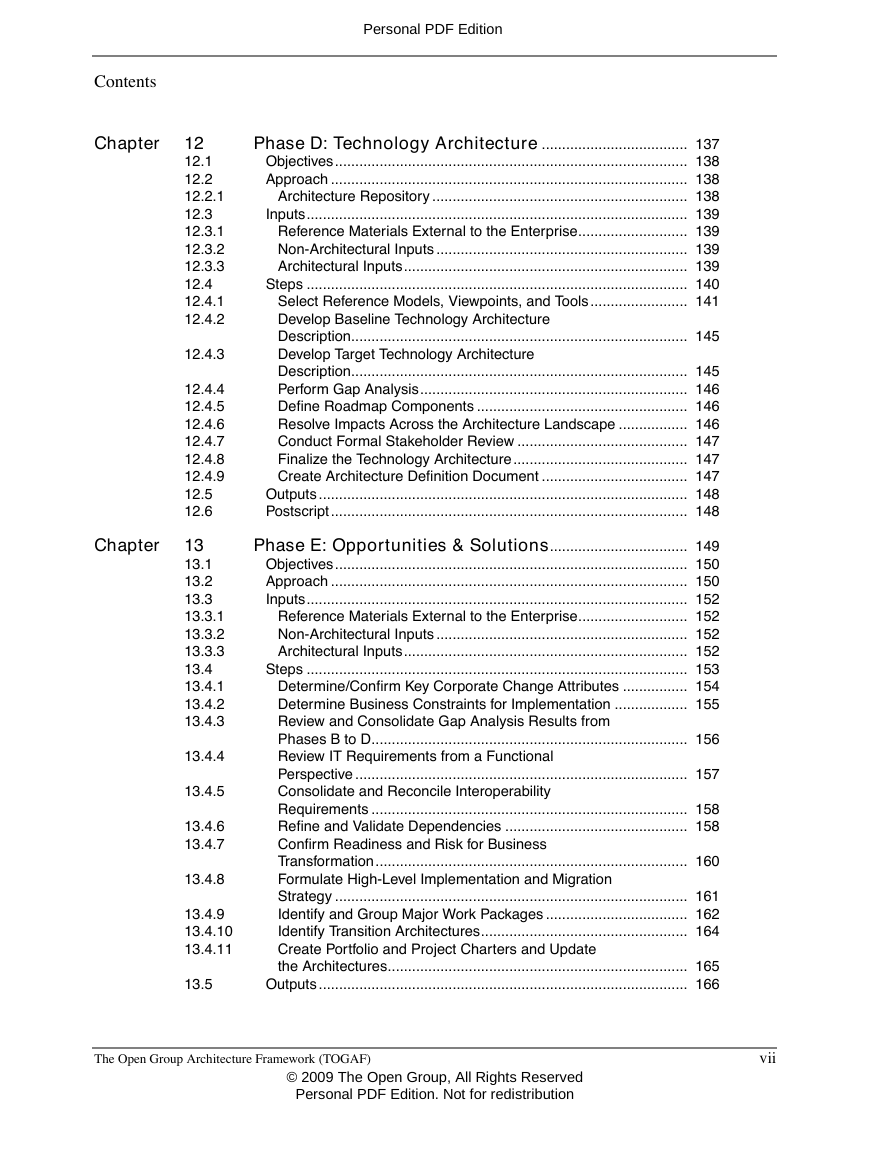
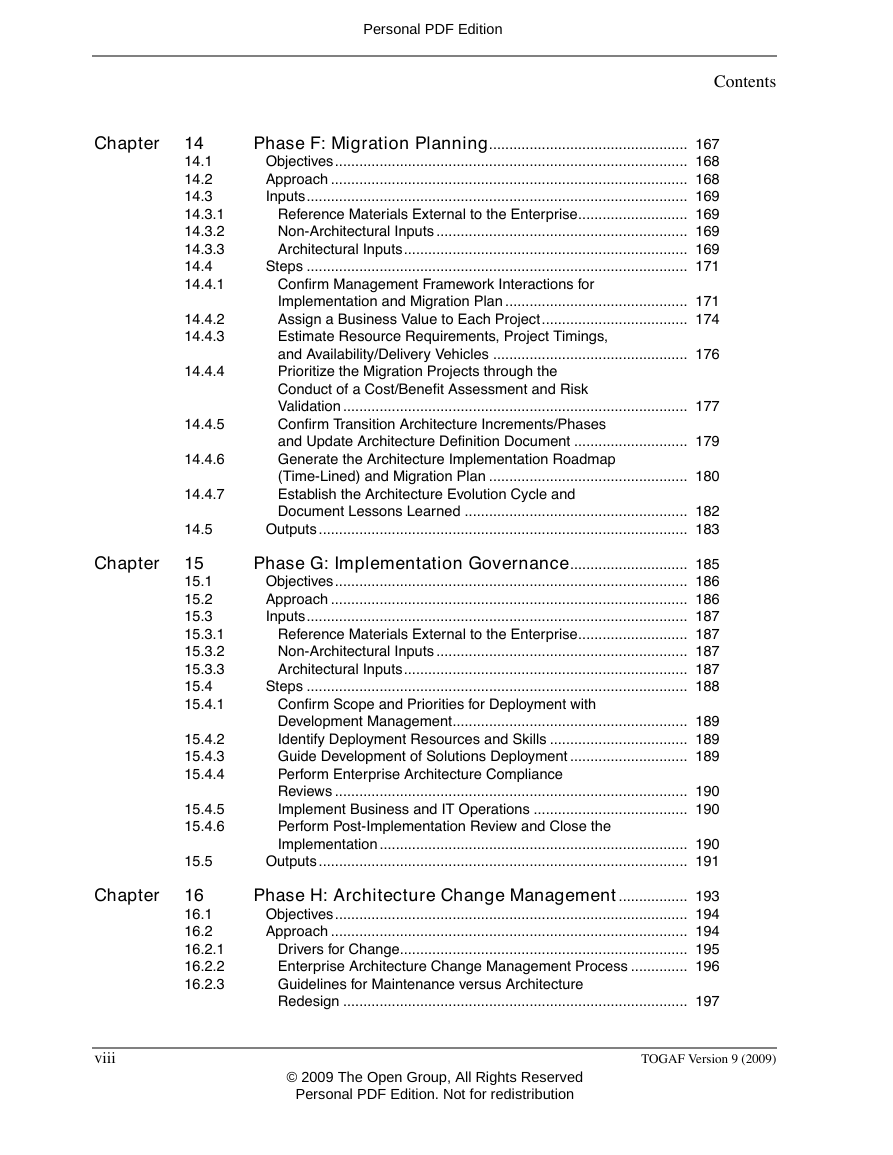








 2023年江西萍乡中考道德与法治真题及答案.doc
2023年江西萍乡中考道德与法治真题及答案.doc 2012年重庆南川中考生物真题及答案.doc
2012年重庆南川中考生物真题及答案.doc 2013年江西师范大学地理学综合及文艺理论基础考研真题.doc
2013年江西师范大学地理学综合及文艺理论基础考研真题.doc 2020年四川甘孜小升初语文真题及答案I卷.doc
2020年四川甘孜小升初语文真题及答案I卷.doc 2020年注册岩土工程师专业基础考试真题及答案.doc
2020年注册岩土工程师专业基础考试真题及答案.doc 2023-2024学年福建省厦门市九年级上学期数学月考试题及答案.doc
2023-2024学年福建省厦门市九年级上学期数学月考试题及答案.doc 2021-2022学年辽宁省沈阳市大东区九年级上学期语文期末试题及答案.doc
2021-2022学年辽宁省沈阳市大东区九年级上学期语文期末试题及答案.doc 2022-2023学年北京东城区初三第一学期物理期末试卷及答案.doc
2022-2023学年北京东城区初三第一学期物理期末试卷及答案.doc 2018上半年江西教师资格初中地理学科知识与教学能力真题及答案.doc
2018上半年江西教师资格初中地理学科知识与教学能力真题及答案.doc 2012年河北国家公务员申论考试真题及答案-省级.doc
2012年河北国家公务员申论考试真题及答案-省级.doc 2020-2021学年江苏省扬州市江都区邵樊片九年级上学期数学第一次质量检测试题及答案.doc
2020-2021学年江苏省扬州市江都区邵樊片九年级上学期数学第一次质量检测试题及答案.doc 2022下半年黑龙江教师资格证中学综合素质真题及答案.doc
2022下半年黑龙江教师资格证中学综合素质真题及答案.doc